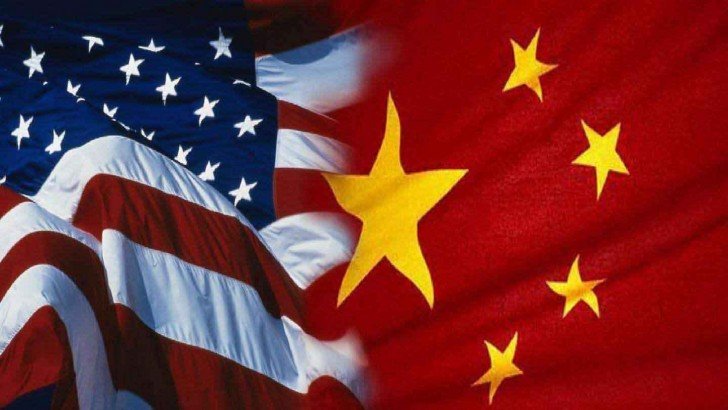Headlines
China's muscle-flexing against India & others, a challenge to US supremacy

New Delhi/Beijing, May 27 China's simultaneous muscle-flexing along the boundaries with India and as well as in the sea against Southeast Asian nations is rapidly establishing that Beijing remains steadfast in challenging the US supremacy in the post-coronavirus world.
In the last decade, the Chinese Communist Party (CCP) has been persistently propagating the view that the American hegemony and the US-led world order is on its last legs. Since the outbreak of the Wuhan-originated coronavirus pandemic, the Xi Jinping regime has been provocatively launching one offensive after another on multiple fronts while the rest of the world is fighting against the contagious disease and the subsequent economic recession.
At home, it is in the process of bringing a new security law in Hong Kong, the semi-autonomous financial hub, to prohibit "treason, secession and sedition" against the Chinese government, curbing the pro-democracy movement. On the democratic island of Taiwan, the People's Republic of China (PRC) has warned the world against encouraging One China Two Systems.
In its surroundings, the CCP has been aggressively fortifying its claim over South China Sea and its islands disputed by Taiwan, Vietnam, the Philippines, Brunei, Indonesia and Malaysia. Not only has the People's Liberation Army (PLA) increased its military and naval presence by constructing artificial islands and carrying out other exercises, it has also released names, longitudes and latitudes for 25 islands and reefs as well as 55 undersea geographic entities, standardising the disputed region. Beijing has also set up two new districts in the city of Sansha in Hainan province to administer islands and reef waters in the disputed SCS.
Though the US, Europe, Australia along with Association of South East Asian Nations (ASEAN) countries have been pushing back with warnings and condemnations, Beijing has not budged. Instead it has upped the ante. China's ships have intruded in the waters near the Japanese-controlled islets several times in the last one month, flaunting its supremacy as it surpassed Japan as Asia's leading naval power. The Chinese fleet now has more ships and missiles than the Japanese fleet possesses.
As the US mounted pressure on the Xi government over South China Sea and Taiwan, the PLA, in its attempt to establish its own dominance on the world stage, began needling India along the 1,346 km-long border in the eastern sector in the northeastern states of Arunachal Pradesh and Sikkim and along the 1,597 km-long Line of Actual Control (LAC) in Ladakh of the western sector.
The Sino-India border disputes in northeast arose from the McMahon Line drawn under the 1914 Simla Convention between British India and Tibet. China rejected the border in Arunachal Pradesh. Aksai Chin, an uninhabited high-altitude wasteland of former state of Jammu & Kashmir, and now part of Ladakh Union Territory, has been occupied by China since the 1962 war.
In the first week of May, 250 Indian and Chinese army soldiers clashed with iron rods, sticks, and even resorted to stone-pelting in the Pangong Tso lake area. In the second week of May, around 150 soldiers of both sides had a face-off near Naku La Pass in Sikkim. In both the incidents, soldiers sustained injuries. Both India and China have now deployed addition troops in Galwan valley, Pangong Tso lake and several areas in northern Sikkim.
Though China has blamed India's Darbuk-Shyok-Daulat Beg Oldi (DSDBO) Road close to the LAC in Ladakh as the trigger for the confrontation, well-known expert on China, Brahma Chellaney, disagrees. Had China objected to the road, it "would have tried disrupting its completion while it was under construction for 18 long years. It is unlikely that this road per se was the trigger for China's incursions. Broader politico-military aims against India seem to be at play," he tweeted.
China expert Jayadev Ranade described the PLA action as "deliberate, planned and approved at the highest level." It involves two military subdistricts subordinate to the Western Theatre Command indicating coordination, he said adding that the PLA personnel were equipped with metal studded batons instead of firearms suggesting a desire not to escalate the conflict.
"There has been no escalation so far. In my view the Chinese plan on staying there for a long while. Like a de facto occupation while negotiations go on. They have laid claim, citing history, to entire Ladakh, Sikkim and Arunachal Pradesh -- so called Chinese territories lost through humiliating treaties," he said.
It seems China is keeping a line open for negotiations, Ranade said adding that he doesn't see China withdrawing without wresting something in return.
In an article, professor of Chinese studies at JNU, Srikanth Kondapalli wrote that "China's leadership thinks that its time has come, this is the moment to enhance its role in the regional and global order".



































